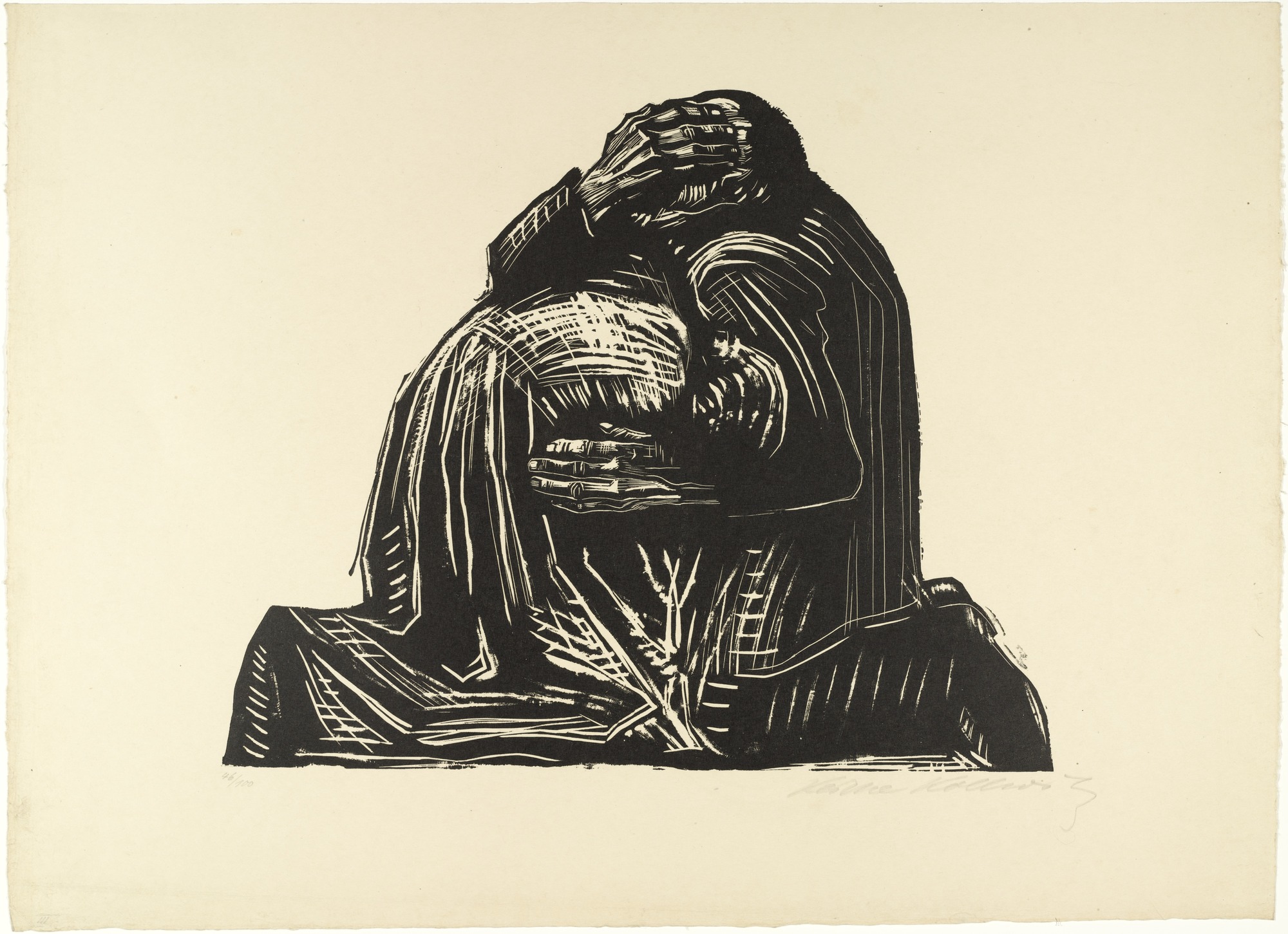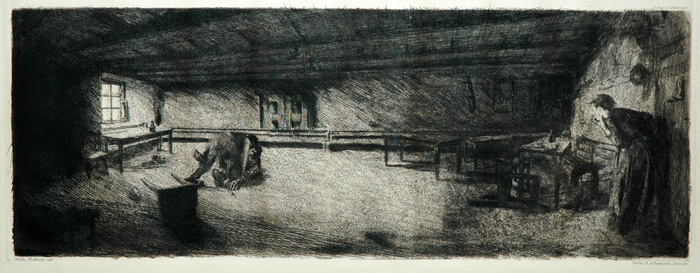German printmaker & draughtsman Käthe Kollwitz was internationally-known during her lifetime, and produced some of the most emotionally visceral art of the 20th century -- all before women were permitted to enter university in Germany. Active during the First and Second World Wars, to which she lost a child and grandchild, much of her art deals with motherhood and death.
Woman With Dead Child, 1903
Killed in Action, 1921.
The Parents, 1923.
The power of her empathy and her ability to translate raw emotions through drawing or wood engraving is truly remarkable. But it would be a mistake to say that this emotional intelligence is a result of her own maternal loss. Kollwitz made art about the suffering of others even before she experienced it herself (although her baby brother's death seemed to have a great effect on her when she was young.) More than just an area of interest for her -- she felt it was her duty to use art as a means of bettering the lives of others.
This goal of Kollwitz' is certainly clear when we take a look at her early life up until her first major work, The Weavers.
Scene from Germinal, 1893.
Poverty (The Weavers Cycle, 1894 - 98, 1 of 6.)
Death (The Weavers Cycle, 1894 - 98, 2 of 6.)
Conspiracy, (The Weavers Cycle, 1894 - 98, 3 of 6.)
March of the Weavers, (The Weavers Cycle, 1894 - 98, 4 of 6.)
Riot, (The Weavers Cycle, 1894 - 98, 5 of 6.)
The End, (The Weavers Cycle, 1894 - 98, 6 of 6.)
Some works made after the start of WWI:
Memorial for Karl Liebknecht, 1919.
Woman in the Lap of Death, 1921.
The Volunteers, 1923.
The Mothers, 1923.
The People, 1923.
Kollwitz and her work are not easily categorized, and perhaps this is the reason for their obscurity. Her style is in some ways rather traditional - she embraces realism rather than abstraction. Many dismiss her work as Betroffenheitskitsch, meaning "empathetic kitsch." But her has an undeniable power, that keeps Kollwitz a venerated artist in Germany, and hopefully among increasingly larger groups, the wider world as well.
Sources for Podcast:
Kearns, Martha. Käthe Kollwitz Woman and Artist. Feminist Press, 1976.
Kollwitz Käthe, and Fiona Griffith. Käthe Kollwitz: Artist of the People. South Bank Centre, 1995.
Kollwitz Käthe, et al. The Diary and Letters of Kaethe Kollwitz. Northwestern University Press, 1995.
Kollwitz, Käthe, and Carl Zigrosser. Prints and Drawings of Käthe Kollwitz. Dover Publ., 1969.
Whitner, Claire C. Käthe Kollwitz and the Women of War: Femininity, Identity, and Art in Germany during World Wars I and II. Davis Museum at Wellesley College, 2016.
















